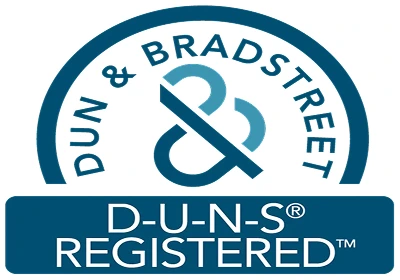Information and Communication Technology Published Insights
Published Date : 14 Jan, 2026
The Global Garage Door Service Market is estimated to be valued at USD 4.78 billion in 2025 and is expected to reach USD 7.16 billion by 2032, exhibiting a compound annual growth rate (CAGR) of 5.9% from 2025 to 2032.... View more
Published Date : 14 Jan, 2026
The Global Beauty Supply Stores Market is estimated to be valued at USD 510.32 Bn in 2025 and is expected to reach USD 737.44 Bn by 2032, exhibiting a compound annual growth rate (CAGR) of 5.4% from 2025 to 2032. The ... View more
Published Date : 14 Jan, 2026
The Global Cornhole Market is estimated to be valued at USD 169.2 Mn in 2025 and is expected to reach USD 257.8 Mn by 2032, exhibiting a compound annual growth rate (CAGR) of 6.2% from 2025 to 2032. Cornhole, also kno... View more
Published Date : 14 Jan, 2026
The Global Trucking Market is estimated to be valued at USD 14.14 Tn in 2025 and is expected to reach USD 20.96 Tn by 2032, exhibiting a compound annual growth rate (CAGR) of 5.8% from 2025 to 2032. The global truckin... View more
Published Date : 14 Jan, 2026
The Global Cruise Travel Market is estimated to be valued at USD 10.84 Billion in 2025 and is expected to reach USD 19.19 Billion by 2032, exhibiting a compound annual growth rate (CAGR) of 8.5% from 2025 to 2032. The... View more
Published Date : 14 Jan, 2026
The Global Diabetes Apps Market is estimated to be valued at USD 11.53 Bn in 2025 and is expected to reach USD 31.62 Bn by 2032, exhibiting a compound annual growth rate (CAGR) of 15.5% from 2025 to 2032. The global d... View more
Published Date : 14 Jan, 2026
Endpoint detection and response systems combine real-time monitoring with automated analysis and collection of endpoint data. Security teams use this data to recognize suspicious behaviors, prevent malware from spreading, and quickly remediate threats. Despite the inc... View more
Published Date : 14 Jan, 2026
Global coding bootcamp market can witness growth as demand for tech skills continues to outpace supply. Coding bootcamps provide intensive, accelerated training programs aimed at preparing students for careers as software developers within few months rathe... View more
Published Date : 14 Jan, 2026
The global cloud social media management market is likely to be valued at USD 10.91 Bn in 2025. It is predicted to display 13.30% CAGR over the forecast period (2025-2032) to reach USD 26.15 Bn by 2032. ... View more
Published Date : 14 Jan, 2026
The U.S. Housing Market is estimated to be valued at USD 52.14 Tn in 2025 and is expected to reach USD 72.88 Tn by 2032, exhibiting a compound annual growth rate (CAGR) of 4.9% from 2025 to 2032. The U.S. housing mark... View more
Published Date : 14 Jan, 2026
The Global Utility Vehicles Market is estimated to be valued at USD 34.91 Bn in 2025 and is expected to reach USD 67.59 Bn by 2032, exhibiting a compound annual growth rate (CAGR) of 9.9% from 2025 to 2032. The global... View more
Published Date : 14 Jan, 2026
The Global Tele Converter Market is estimated to be valued at USD 3.86 billion in 2025 and is expected to reach USD 5.39 billion by 2032, exhibiting a compound annual growth rate (CAGR) of 4.9% from 2025 to 2032. A tele converter is an attachable lens used in photogra... View more
Published Date : 14 Jan, 2026
The Global Commercial Landscape Lighting Market is estimated to be valued at US$ 6.09 Bn in 2025 and is expected to reach US$ 9.91 Bn by 2032, exhibiting a compound annual growth rate (CAGR) of 7.2% from 2025 to 2032.... View more
Published Date : 14 Jan, 2026
The Global Internal Training Services Market is estimated to be valued at USD 1.01 Bn in 2025 and is expected to reach USD 1.35 Bn by 2032, exhibiting a compound annual growth rate (CAGR) of 4.2% from 2025 to 2032. In... View more
Published Date : 14 Jan, 2026
The Global Corporate Recovery Service Market is estimated to be valued at US$ 149.2 Mn in 2025 and is expected to reach US$ 228.8 Mn by 2032, exhibiting a compound annual growth rate (CAGR) of 6.3% from 2025 to 2032. ... View more
Published Date : 14 Jan, 2026
The Global Robotics Ethics Market is estimated to be valued at US$ 3.22 Bn in 2025 and is expected to reach US$ 7.77 Bn by 2032, exhibiting a compound annual growth rate (CAGR) of 13.4% from 2025 to 2032. The global r... View more
Published Date : 14 Jan, 2026
The Global Pretrained AI Models Market is estimated to be valued at US$ 536.6 Mn in 2025 and is expected to reach US$ 1,270.2 Mn by 2032, exhibiting a compound annual growth rate (CAGR) of 13.1% from 2025 to 2032. The... View more
Published Date : 14 Jan, 2026
The Global Horse Trailers Market is estimated to be valued at US$ 69.81 Bn in 2025 and is expected to reach US$ 132.61 Bn by 2032, exhibiting a compound annual growth rate (CAGR) of 9.6% from 2025 to 2032. The global ... View more





